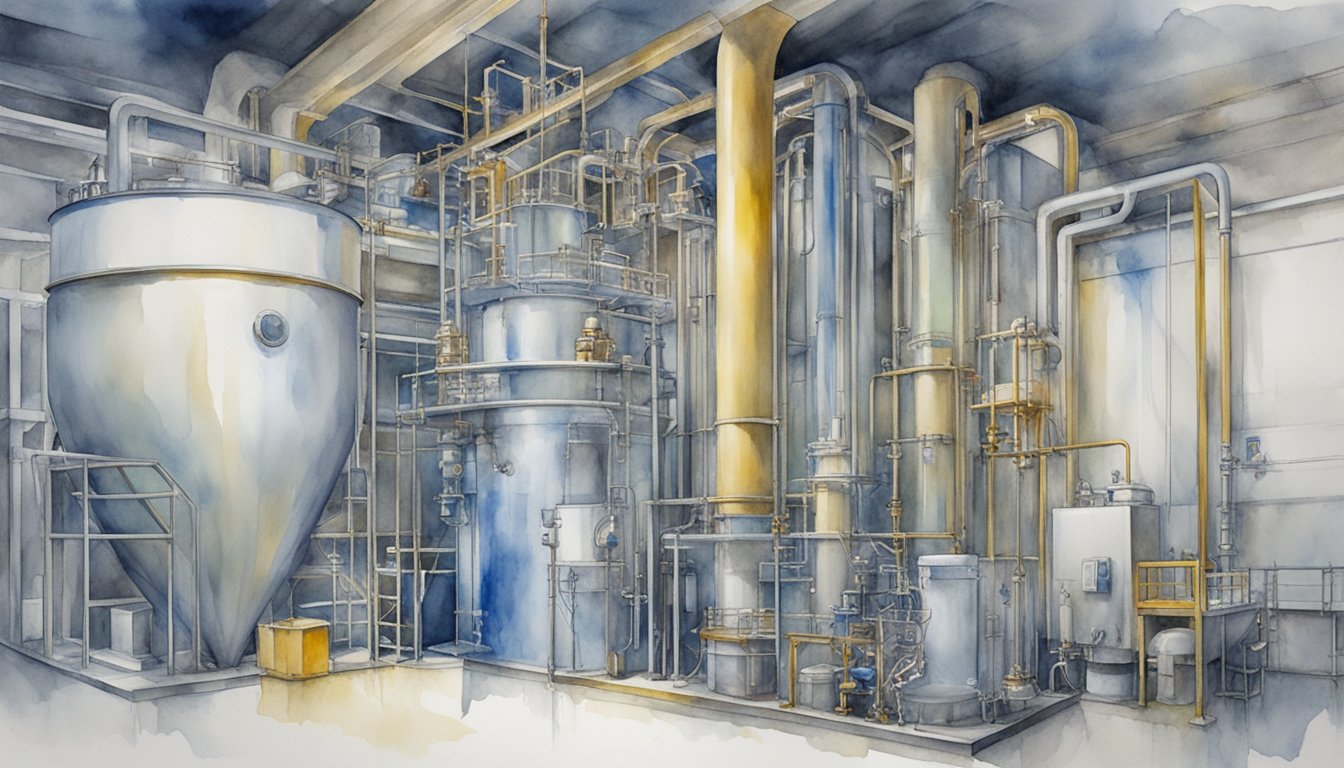Basics of Cryogenic Freezing

Cryogenic freezing is a fascinating corner of science that taps into the realms of biology and technology to preserve materials at extremely low temperatures. This method is crucial for safeguarding biological samples, such as cells and tissues, and hinges on complex processes and materials like cryoprotectants and liquid nitrogen.
Cryonics and Cryopreservation
In the world of cryogenic freezing, cryonics stands out as the technique of cooling individuals to sub-zero temperatures with the hope of reviving them in the future. On a smaller scale, cryopreservation is a more routine practice, focusing on the conservation of biological materials like cells, tissues, or organs by pausing biological activity.
Understanding the Freezing Process
The freezing process in cryogenics isn’t just about dropping temperatures. It’s a dance of carefully cooling samples to prevent detrimental ice formation. During this process, tissues are cooled using substances like liquid nitrogen, which can plunge temperatures to -196°C, effectively stopping all biological activity.
Cryoprotectants and Their Role
Cryoprotectants are the unsung heroes of cryopreservation, acting as antifreeze that protects delicate cells from freezing damage. These substances safeguard by preventing ice crystals, which can pierce and rupture cell membranes, thus maintaining the cell’s viability upon thawing.
Ice Formation and Vitrification
Vitrification is a crucial aspect of cryopreservation. It’s a process that avoids ice formation altogether, instead transitioning tissues into a glass-like state. This is achieved by ramping up the concentration of cryoprotectants, ensuring ice doesn’t form and thereby sidestepping ice-related damage.
Clinical and Futuristic Applications
Cryogenics in the realm of medicine and scientific research opens up exciting possibilities—imagine preserving vital organs for transplants or even halting the progression of terminal diseases. As technology progresses, the lines between medical science fiction and reality begin to blur, giving rise to critical discussions on what the future may hold.
Cryopreservation in Medical Science
At the forefront of medicine, cryopreservation plays a pivotal role in preserving cells, tissues, and organs at low temperatures. This technique has become essential in various treatments, from combatting certain forms of cancer by freezing and destroying abnormal cells, to storing sperm and embryos for fertility treatments. Doctors also use cryogenics to preserve stem cells, which have the potential to repair damaged tissues, heralding hope in regenerative medicine.
Prospects of Reviving the Cryopreserved
Imagine a world where diseases like ALS or kidney cancer could be halted in their tracks. Cryopreservation sparks the possibility of reviving cryopreserved tissues or even whole organs in the future. Although intricate structures pose a challenge due to the formation of ice crystals during the freezing and thawing process, research in areas like animal brains suggests that revival technology may transform the landscape of medicine, bringing us closer than ever to rescuing patients from the clutches of death.
Ethical Considerations and Costs
The merging of cryogenics with clinical applications invites a Pandora’s box of ethical considerations. While the potential to cure might offer hope, it also opens up complex questions around the definition of death and the right to be resurrected. Additionally, the cost of cryogenic procedures is often expensive, raising debates over accessibility and the moral implications of who gets to benefit from this burgeoning technology.
Notable Cases and Legal Landscape

Cryogenic freezing, a field straddling the edge of current medical science and futuristic aspirations, has seen its fair share of milestones, legal challenges, and shifting public perception. This section unwraps the evolution of cryonics, from its earliest implementations to the assemblage of legalities that govern it, as well as its portrayal to the world.
Historical Milestones in Cryonics
The journey into cryonics officially began in 1967 when Dr. James Bedford became the first person to be cryogenically frozen after his legal death. Since then, the Alcor Life Extension Foundation in Arizona, one of the most renowned cryonics organizations, has preserved bodies and brains in a bid to extend life, with the hopes that future technology, possibly involving nanotechnology, will revive them. The Cryonics Society of California, no longer operational, also played a significant role as a pioneer in cryonic preservation.
Legal and Ethical Issues
The legal and ethical dimensions in cryonics are complex. In one high-profile case, baseball legend Ted Williams was cryopreserved, which resulted in legal disputes among his family members. Disagreements often stem from interpreting the deceased’s wishes and the disposition of their remains. Moreover, there’s a debate in medical ethics about whether resources should be allocated toward cryonics, which assumes the cessation of biological functions can be reversed—an assertion that challenges current medical understanding about brain function and the irreversible nature of death from lack of oxygen.
Public Perception and Media Coverage
Public interest in cryonics has fluctuated, influenced by media coverage and popular culture. Visionaries like Hal Finney, a pioneer in Bitcoin, cast a spotlight on cryonics by choosing to be cryopreserved. Stories in outlets like the New York Times and MIT Technology Review have detailed cryonics cases and technologies, shaping the narrative around this enigmatic quest to conquer death..onActivityResult the coverage, societies grapple with a mix of skepticism and hope regarding the potential benefits and pitfalls of cryonics.

